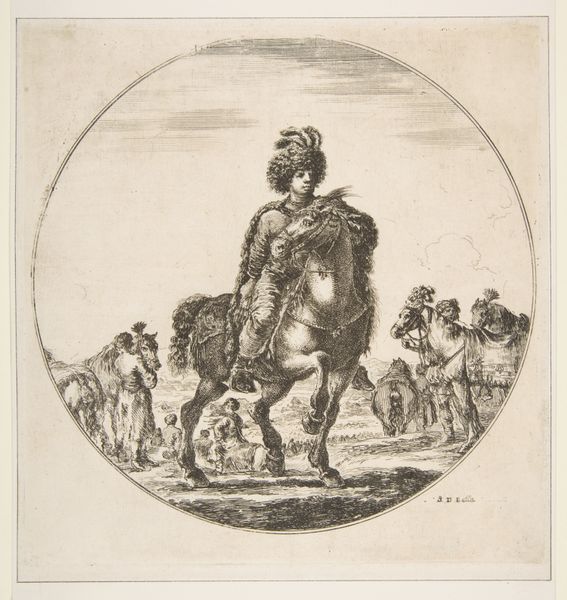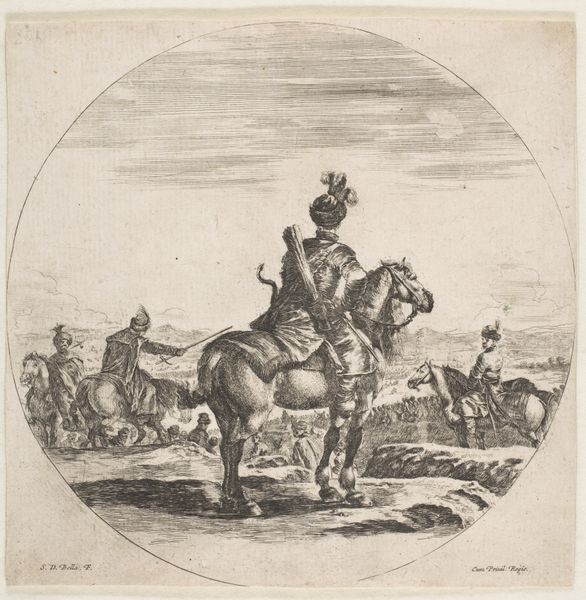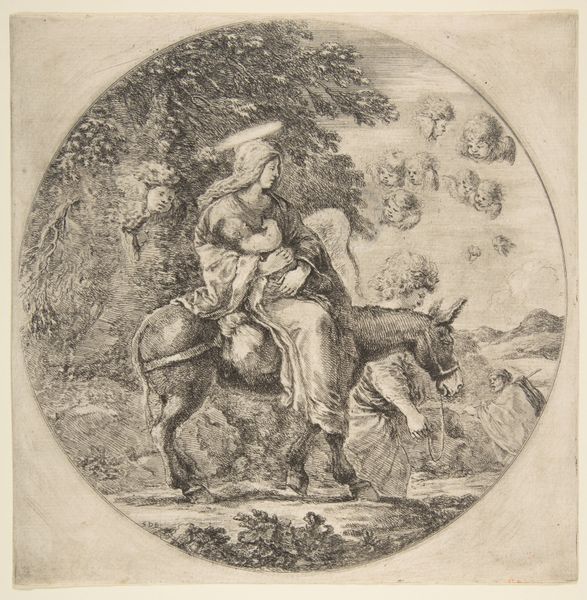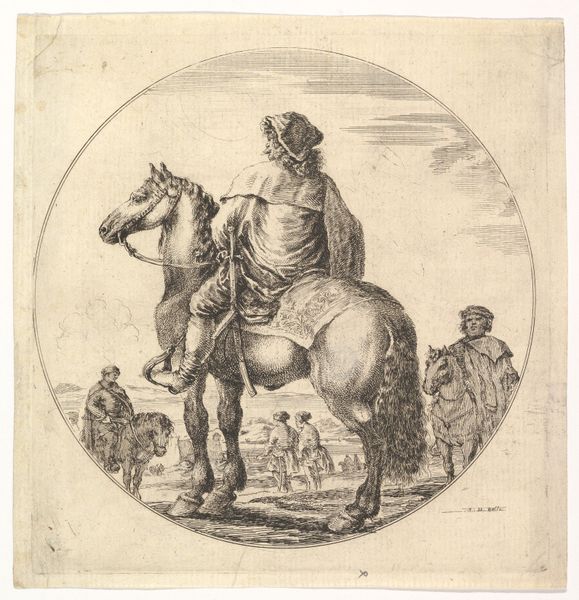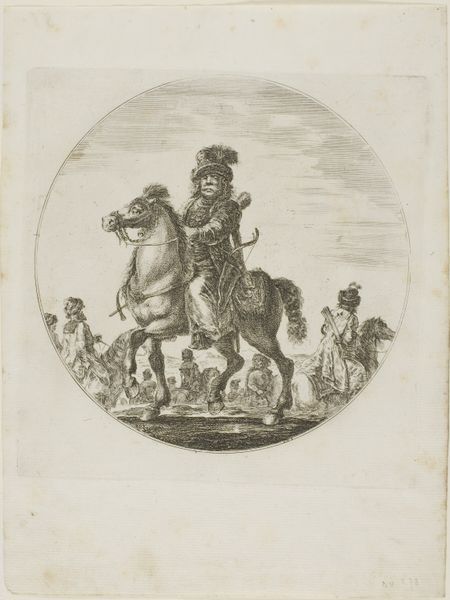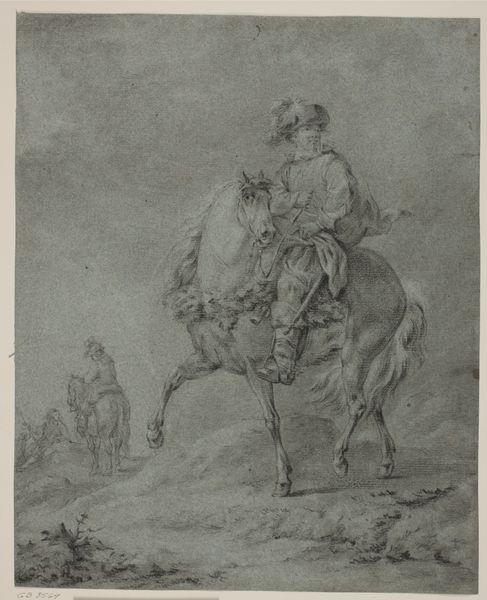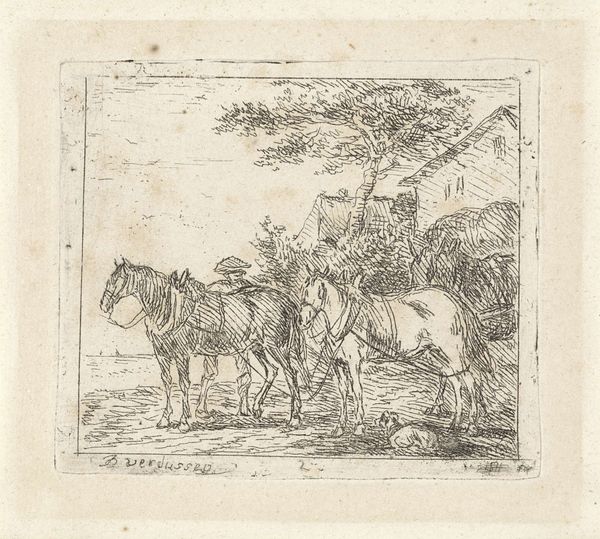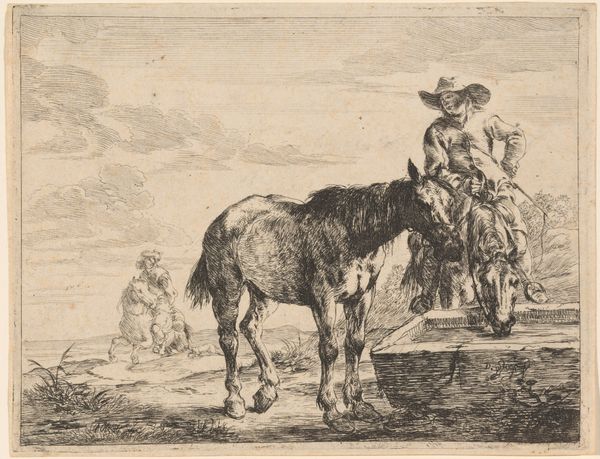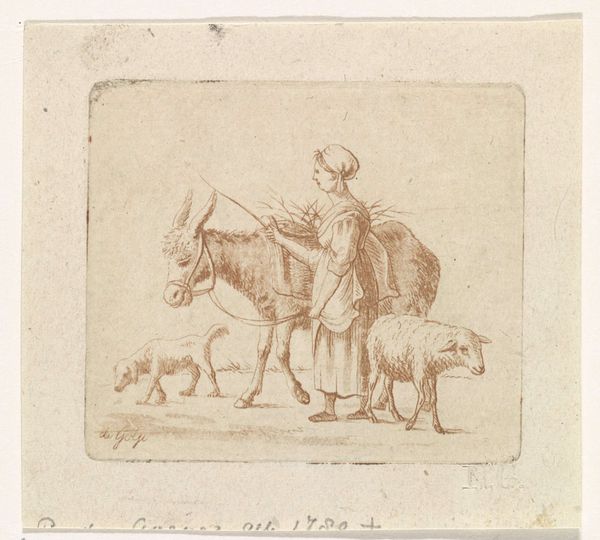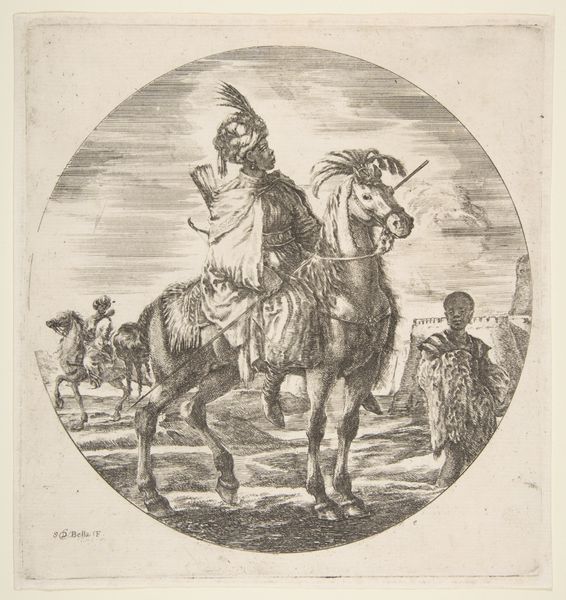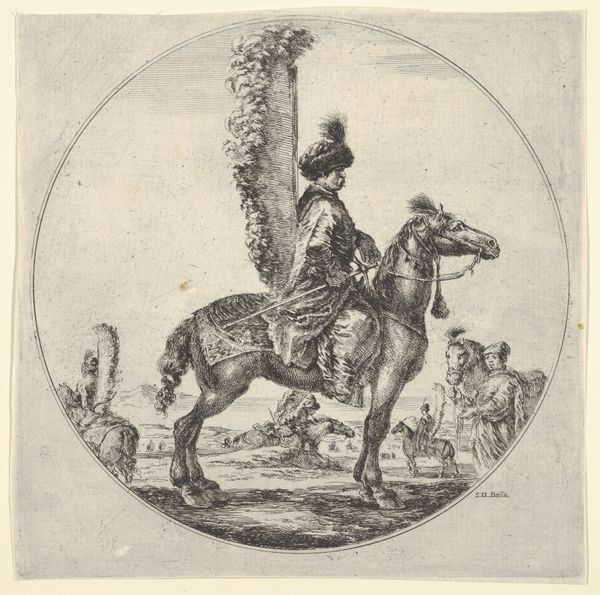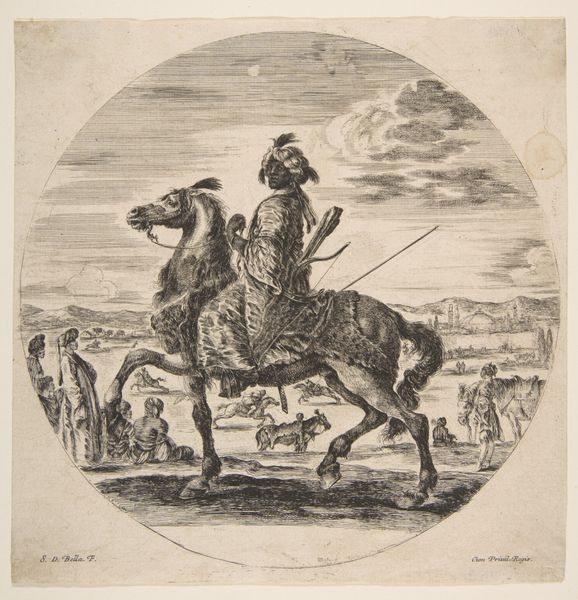
Two Polish horsemen with their horses facing left, from "Figures on Horseback" (Cavaliers nègres, polonais et hongrois) 1646 - 1656
0:00
0:00
drawing, print, etching
#
pencil drawn
#
drawing
#
baroque
# print
#
etching
#
landscape
#
figuration
#
pencil drawing
#
horse
#
men
Dimensions: Sheet: 7 3/16 × 7 3/8 in. (18.3 × 18.7 cm)
Copyright: Public Domain
Editor: We're looking at "Two Polish horsemen with their horses facing left" by Stefano della Bella, dating from around 1646 to 1656. It's an etching, currently held at the Metropolitan Museum of Art. I'm struck by how much detail he manages to convey with such delicate lines. What stands out to you? Curator: Immediately, I am drawn to the artist's mastery of line. Notice how the density and direction of the etched lines create a palpable sense of volume and texture, particularly in the rendering of the horses' musculature and the riders' garments. It’s a remarkable demonstration of how variations in line quality can imply light and shadow. Consider how the composition leads the eye – from the foreground figures towards the diminutive figures in the background, all within this circular form. Editor: Yes, the circular form is interesting. Why do you think he chose that format? Curator: The circular format, or tondo, focuses the eye. It contains the scene, compelling us to consider the relationships within. Notice the spatial recession achieved purely through scaling down the figures. Furthermore, observe the confident draftsmanship, there is very little reworking. Della Bella understood the power of a single, definitive line. It all adds up to a pleasing harmony. Editor: It’s amazing to think about the level of planning that went into something that appears so spontaneous. Are there other Baroque works like this? Curator: Numerous Baroque artists utilized the etching technique to create sophisticated tonal effects; however, Della Bella's refined linearity, evident in his strategic employment of hatching and cross-hatching to suggest form, creates an ethereal play of light and shadow that gives his works distinctive dynamism. A comparable structural sophistication can be seen in Callot's prints. Editor: I've never thought of an etching in terms of light before. I am leaving with a whole new way to appreciate this work. Thank you! Curator: The beauty of art lies in its ability to constantly reveal new facets with each observation. It has been a stimulating exchange.
Comments
No comments
Be the first to comment and join the conversation on the ultimate creative platform.
